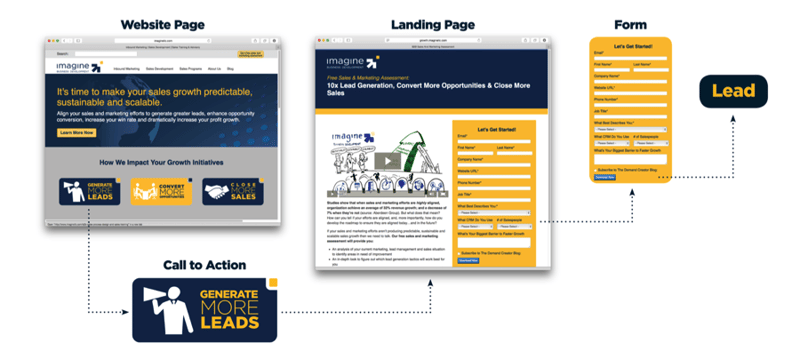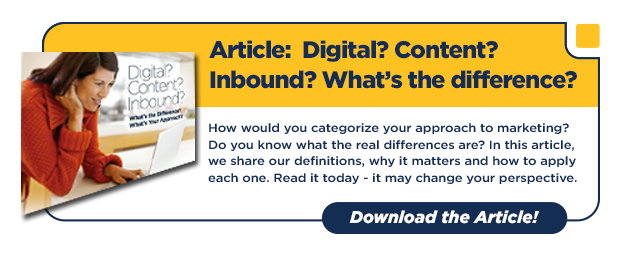 Measuring the effectiveness of your marketing efforts is a critical part of any marketing or demand generation strategy. Marketers and business executives spend considerable time determining what to measure (if you’re still looking for good metrics, we’ve got some for you here) and reviewing performance.
Measuring the effectiveness of your marketing efforts is a critical part of any marketing or demand generation strategy. Marketers and business executives spend considerable time determining what to measure (if you’re still looking for good metrics, we’ve got some for you here) and reviewing performance.
While the key performance indicators (KPI) are certainly important and should be a regular part of what you review, what if there were an even more important metric (which very few think about) that, when monitored properly, can give you three powerful insights:
- Highlight the real impact your marketing investments are having on your demand generation strategy.
- Inform you about what your prospects and customers really think about your content.
- Actionable intelligence to guide your content marketing efforts going forward.
What’s this powerful, secret metric? Impact of marketing efforts more than 90-days old. That’s right, the most powerful marketing metric is the impact of your efforts you did in the past.
As a growth executive, you have to make a simple and crucial decision. Are you going to build your demand strategy in the typical, expense-based approach, or with a more modern asset-based strategy?
Stop for a moment and ask yourself what would happen to your lead generation and sales efforts if you totally stopped all of your marketing efforts for 90-days. For most companies, it would mean those efforts would grind to a halt and it would take months to recover. For a few, strong companies, it would represent a blip and they would continue to grow and perform as if almost nothing had happened.
The point of this assessment is not to encourage (in any way, shape or form) shutting off, stopping or slowing down your marketing efforts. Rather, it’s a great way to judge the effectiveness. A few weeks ago Doug shared a post highlighting the keys to building a demand generation funnel to produce consistent, scalable growth.
To deliver on the type of funnel performance Doug talks about, marketing must build an asset that gets stronger with each additional action and where the results of those actions build upon themselves. Without such an asset, there will be simply too much that must be done every month and scaling growth will be become cost prohibitive.
So how do you build that asset? Here are five actions to help you get started.
1. Create the strategy
As Doug explained in this post, an essential part of inbound success is building the strategy so you can execute with the right velocity. Part of that strategy is creating your buyer personas, establishing messaging and building the structure. Before you can begin to build the asset, make sure you’ve taken the time and put the effort into building the strategy.
2. Build content
The heart of any marketing approach is content. It powers everything else. If you're going to build a marketing asset, it starts here.
You may already have a blog and that is a great place to start thinking about marketing as an asset. Every time you post to your blog, you are adding to the asset. By creating (and executing) an editorial calendar that covers the topics facing your buyer personas, you are building the equivalent of a brick and mortar library section specifically for the people you want to be a hero to. Selecting timeless or evergreen topics will help you create compounding blog posts which can have a significant positive impact far past the publish date.
It is also important to commit to a consistent schedule. Blogging consistently can quickly build a strong content foundation. For example, blogging just once a week will give you 26 blog posts by the end of six months.
In addition to your blog, create premium content. Whitepapers, ebooks, case studies, video, infographics, webinars, checklists, guides…the list goes on and on. Design and create pieces that teach your prospects and move them from one stage of their buyer’s journey to the next. Build content for each of your personas.
Your website – in addition to your blog and premium content – is part of your overall content engine. More importantly, when designed correctly, it serves as a sales rep that is available 24/7/365.
Your web pages may be the first place a prospect learns about you and the issues you can help them solve. Keep the content focused on helping your prospects. Provide clear information laid out in a way that is easy to follow. Which brings me to the next point.
3. Build conversion paths
If you want your marketing efforts to always be working for you, it is important that you spend the time building conversion paths on your website. Here’s an example.

Apply what you know about your prospects' buyer’s journey. Create calls-to-action (CTAs) that bring visitors to relevant content. When they receive an offer, provide additional CTAs for the next logical piece of content.
Creating the right content and incorporating it into the right conversion paths builds an asset that will always be working for you.
4. Create lead nurturing workflows
When a visitor follows your conversion path, they provide you with valuable information about who they are and what they’re looking for. It is important to capitalize on that information by creating lead nurturing workflows using your marketing automation platform (we use HubSpot) to keep them engaged.
Segmentation is one of the keys to successful lead nurturing. The more specific you can be, the better. Using content you’ve already developed – blog posts, premium content, web pages – map out an appropriate flow of lead nurture emails based on how you’ve decided to segment your leads.
These workflows can be designed to automatically trigger emails based on the actions of the recipient. Once they’re built, it is up to you to shut them off. Until you do, this asset will also continue to work for you.
For more on lead nurturing, download our guide here.
5. Optimize your social media profiles
Social media provides another opportunity to build your marketing asset. In this blog post, Ellen describes how to optimize your profiles. Build them correctly from the start and they will work for you well into the future. When visitors find you, they can view your profile and everything you’ve ever posted. So every time you promote your content, another entry is added to your profile.
Additionally, marketing automation tools allow you to schedule posts ahead of time. If you schedule out several weeks, your followers will still see new tweets or posts.
We would never recommend slowing or stopping your marketing efforts but do recommend that you stop an evaluate your approach. Are you building a marketing asset or contributing to just another expense?

